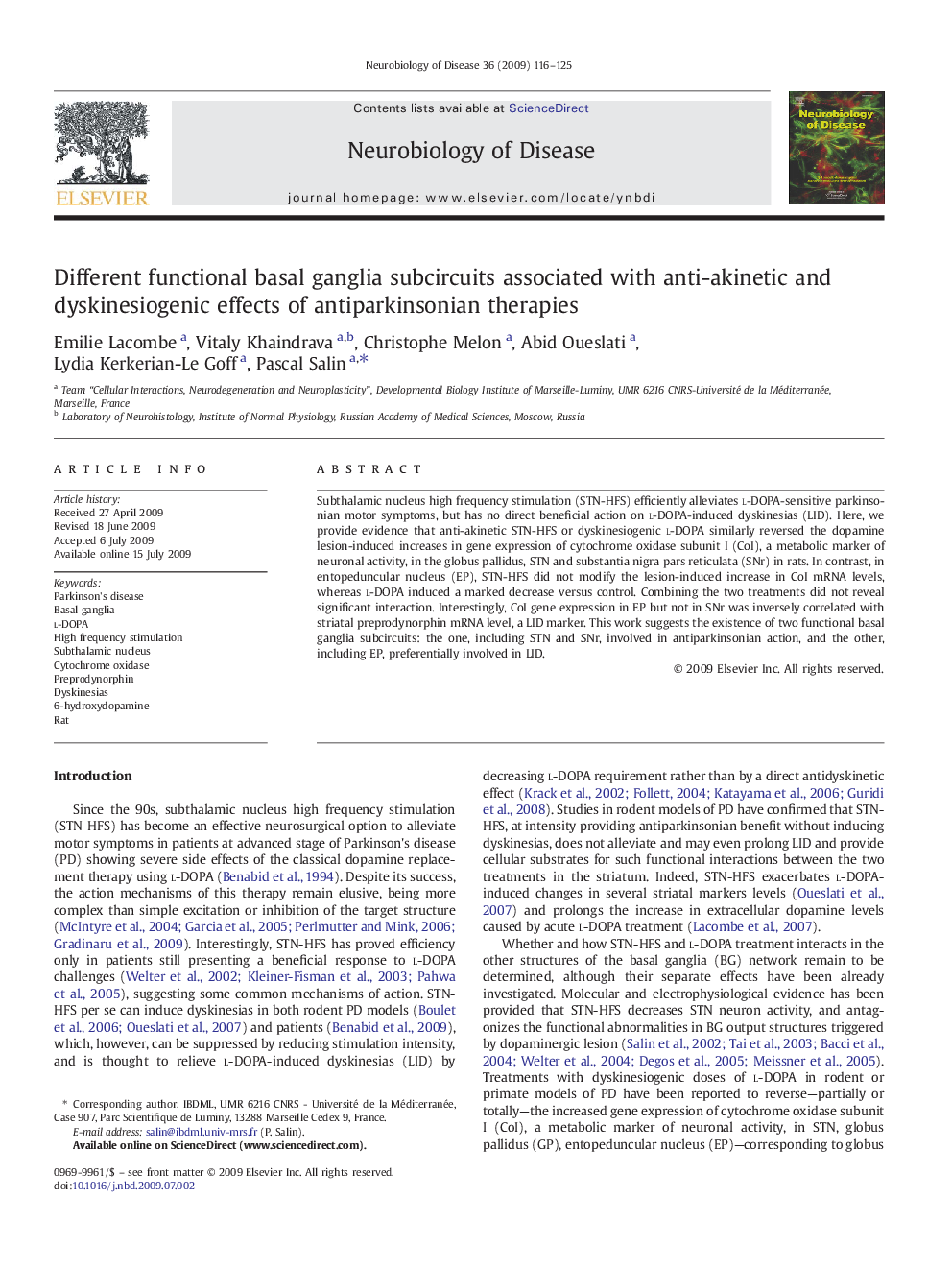| Article ID | Journal | Published Year | Pages | File Type |
|---|---|---|---|---|
| 3070116 | Neurobiology of Disease | 2009 | 10 Pages |
Subthalamic nucleus high frequency stimulation (STN-HFS) efficiently alleviates l-DOPA-sensitive parkinsonian motor symptoms, but has no direct beneficial action on l-DOPA-induced dyskinesias (LID). Here, we provide evidence that anti-akinetic STN-HFS or dyskinesiogenic l-DOPA similarly reversed the dopamine lesion-induced increases in gene expression of cytochrome oxidase subunit I (CoI), a metabolic marker of neuronal activity, in the globus pallidus, STN and substantia nigra pars reticulata (SNr) in rats. In contrast, in entopeduncular nucleus (EP), STN-HFS did not modify the lesion-induced increase in CoI mRNA levels, whereas l-DOPA induced a marked decrease versus control. Combining the two treatments did not reveal significant interaction. Interestingly, CoI gene expression in EP but not in SNr was inversely correlated with striatal preprodynorphin mRNA level, a LID marker. This work suggests the existence of two functional basal ganglia subcircuits: the one, including STN and SNr, involved in antiparkinsonian action, and the other, including EP, preferentially involved in LID.
